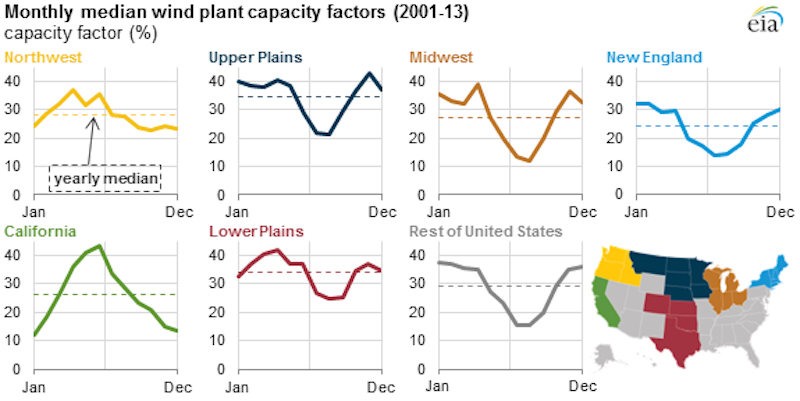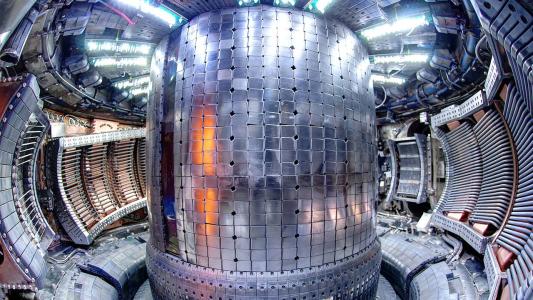Scientists at the US Department of Energy have created a low-cost molten salt battery that can store energy for months — potentially giving us a way to store and use energy from renewables year round.
The challenge: To stop climate change, we need to transition toward cleaner sources of energy.
Renewable energy (especially wind and solar) has become increasingly cheap to generate over the last couple decades, but storage is still an issue — we can burn as much coal or gas as we want, whenever we need it, but we can’t force the wind to blow.
Today’s batteries self-discharge, preventing us from easily stockpiling energy generated by renewables for later use.
Batteries can help with short-term storage — leveling out fluctuations in sunlight or wind over the course of the day or a week. However, today’s electric batteries self-discharge, meaning they lose energy while sitting idle, so we can only store energy in them for a few days or weeks.
Renewables also have longer-term fluctuations with the seasons. Solar falls off in the winter, while wind peaks at different times in different parts of the country.
We can’t easily stockpile the excess energy generated by renewables at their peak for use much later when output falls. As a result, power companies rely on fossil fuels to even things out.

Why it matters: If we could store energy from renewables long term, large batteries could be powered up during sunny summers or windy springs, and then discharged later in the year, lessening or even eliminating our reliance on coal and gas.
The more immediate impact of long-term battery storage would be to make our existing energy grids more reliable — if severe weather disrupted power generation, we could tap into the energy of charged batteries while waiting for repairs.
“It’s a lot like growing food in your garden in the spring, putting the extra in a container in your freezer, and then thawing it out for dinner in the winter,” said Minyuan “Miller” Li, first author of a study on the new battery.
Long-term battery storage would make our existing energy grids more reliable.
What’s new? Scientists at the DoE’s Pacific Northwest National Laboratory (PNNL) have now created a hockey puck-sized battery prototype that can retain 92% of the energy stored in it for 12 weeks.
“This research marks an important step toward a seasonal battery storage solution that overcomes the self-discharge limitations of today’s battery technologies,” said Imre Gyuk, director of energy storage at DoE’s Office of Electricity, which funded the battery’s development.
The hockey puck-sized battery prototype can retain 92% of the energy stored in it for 12 weeks.
How it works: Batteries contain two electrodes (the cathode and the anode) and a solution that carries charged atoms (ions) between them. That solution is the “electrolyte,” and in PNNL’s battery, it’s made of molten salt.
The salt is solid at room temperature, but liquid (or molten) at high temperatures. Because the charged particles in a molten salt battery can only move when the salt is liquid, the battery only works at high temperatures, about 350 degrees Fahrenheit.
When the battery returns to room temperature, the ions are essentially frozen in place — this “hibernation” locks in the battery’s energy, minimizing self-discharge. When the battery is heated up, the ions are once again free to flow.
The prototype’s materials cost $23 per kWh, compared to $90 per kWh for today’s lithium-ion batteries.
The bottom line: This isn’t the first molten salt battery, but the PNNL scientists used abundant, inexpensive materials in their prototype, notably replacing the ceramic separator typically used in this type of battery with a cheaper and more durable one made of fiberglass.
As a result, their prototype battery had a materials cost of just $23 per kilowatt hour (before the price of nickel recently jumped), compared to $90 per kWh for today’s lithium-ion batteries. The team is now trying to replace the nickel in the battery with iron, which would drop the cost to just $6 per kWh.
If the team can effectively scale up its molten salt battery, the device’s lower cost, higher durability gives it a better than average shot of actually making it out of the lab and into the wild, where it could shore up the electric grid while helping save the environment.
We’d love to hear from you! If you have a comment about this article or if you have a tip for a future Freethink story, please email us at [email protected].






